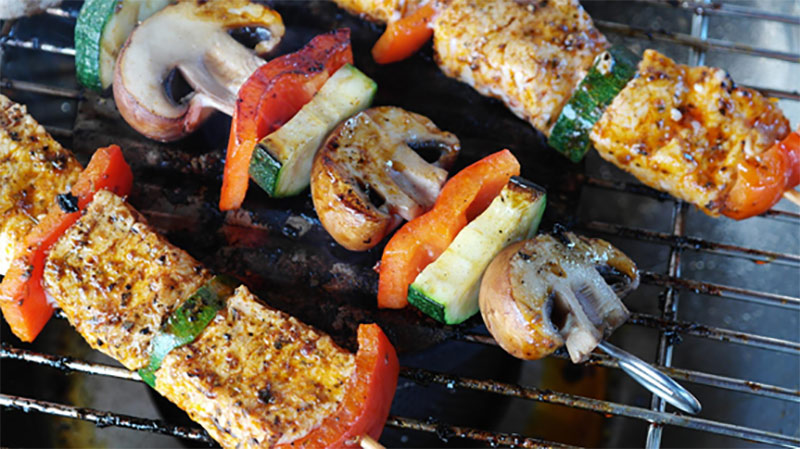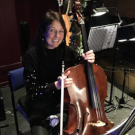BBQ Safety Tips for the Summer
No one can deny that summer has arrived! The BBQ equipment has been out in force, and with the sunshine set to continue, it isn't being put away any time soon.
Sadly, getting out the BBQ is also a time when serious injuries can occur and also cause untold damage to our environment. Indeed, some areas in the UK have taken the decision to ban BBQs in public parks and on beaches. This follows a steep rise in burns from people stepping on leftover or badly handled disposable barbecues as well as these types of barbecues causing devastating heath fires in our beautiful countryside.

So, before you embark on your BBQ in the back garden with friends and family - or decide to take a disposable barbecue on a picnic or camping trip - have a read through our important BBQ safety tips for the summer.
- Check your BBQ for any damage or defect - your BBQ will have been stored away over many months. So, when you get it out of storage, first of all, give it a thoroughly good clean with a stiff brush and warm, soapy water. Let it completely dry and then check it over for any damage or faults, such as loose screws, uneven or broken legs or feet and ill-fitting grills or lids. If you have a gas BBQ, make sure all rubber hoses haven't perished. Also, check that the regulator and connections are tight to avoid leakage. You must make sure the propane cylinder you are using for a gas barbecue is in good condition (or buy a new one). They must be certified and they cannot be refilled, whereas gas cylinders can be but only by a certified gas supplier. If there are any dents or it is rusty, do not use it. Always keep it upright, secure and well-ventilated.
- Location, location, location - make sure you don't site your BBQ near buildings or any outdoor sheds, marquees, tents or awnings, overhanging tree branches, fences or bushes, and certainly don't put a barbecue on a balcony or indoors! Your BBQ should always be on level, firm ground – preferably not on grass as the legs could sink into the soil, making it unsteady - and make sure it is in a well-ventilated area with plenty of fresh air.
- Only use BBQ firelighters to light your barbecue - you must never use any flammable liquid, like meth, petrol or paraffin to light your BBQ. Only use firelighters that are specifically for barbecue use.
- Never leave a lit BBQ unattended - always make sure an adult is looking after the barbecue when it is lit and when it is cooling down after cooking. It's vitally important to keep children and pets away from the BBQ to avoid any burns and it being knocked over.
- Make sure embers are cold before disposal - the ash and charcoal of a BBQ stay hot for a long time after cooking (hours!) Always make sure the BBQ ashes are completely cold before you dispose of them. The same applies to disposable BBQ's before you throw them away.
- Beware of carbon monoxide poisoning - barbecuing can release carbon monoxide fumes in the smoke, so make sure no one is in the direct line of BBQ smoke. Always be aware of the signs of carbon monoxide poisoning - headaches, breathlessness, dizziness, nausea and loss of consciousness - so you can act immediately should anyone feel these symptoms.
- Metal gets hot! - as the BBQ charcoal heats up, so will the metal barbecue itself, so be careful not to touch any hot surfaces when cooking. Place the BBQ away from seating areas to avoid anyone coming in to close contact with the BBQ, and don't move the BBQ until it has completely cooled down. It's always a good idea to use long, wooden-handled utensils to avoid getting burnt hands when cooking. It’s always handy to keep a bucket of cold water nearby.
How to treat BBQ burns
If someone does get burnt by a BBQ, (and hopefully, this won’t happen if you follow our safety tips), it's good to know how to treat a burn.
First, identify the type of burn:
- First-degree or minor burns are like sunburns, where the skin is red and painful, but only the outer layer of skin is affected.
- Second-degree burns are red, painful and often form a blister. They affect the outer layer and the underneath layer of skin.
- Third-degree burns are severe and extremely painful, affecting the deep layer of skin as well. This type of burn also blisters and looks like they have white edges. There is often little pain with this type of burn as the nerves will have been damaged, and medical attention at A&E is required as soon as possible.
If the burn is third-degree or is on the face, hands, feet or genitals, always go to A&E for treatment. The same applies if it is a child or elderly person that has been burnt, if it looks infected (there is a discharge and the patient has a high temperature), or if it is a large burn (bigger than three inches).
However, minor burns and some second-degree burns can be treated at home with basic First Aid:
- Move away from the heat source and remove any clothing or jewellery that may be touching the burn.
- Place the burn under running cold water, if it's a hand or foot, for 15-20 minutes. Alternatively, immerse in cool water. This will dissipate the heat, reduce the pain and minimise swelling. Do not use a high-pressure spray of water on the burn.
- Gently dab the burn dry and then softly clean the burn using either a wound spray or a mild soap-and-water solution.
- Cover the burn with a non-stick gauze bandage, a sterile dressing specifically for burns or a cotton material that is clean to reduce infection risk. You can use cling film but make sure it is not applied too tightly.
Over time, the pain will subside but if you are in any doubt, always contact your doctor or local medical practitioner for advice.
ESE Direct is a leading supplier of products for businesses, schools, colleges and universities, manufacturing, workshops and warehouses. With a wide and diverse range of products, more than 40 years of knowledge and experience in the industry, a bespoke design and installation service and exceptional customer service, you can trust ESE Direct.

Author Bio - Debs
Digital marketer, social media, content writer, musician, sloth-lover, tea-drinker.





